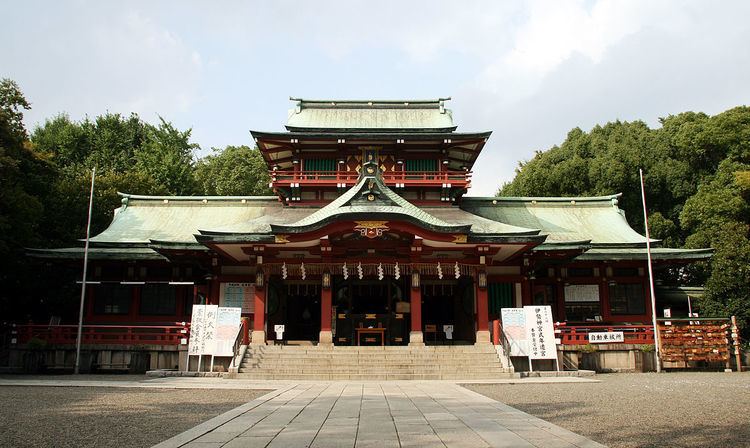Phone +81 3-3642-1315 | Dedicated to Hachiman | |
 | ||
Website www.tomiokahachimangu.or.jp Similar Monzen‑Nakachō Station, Kameidoten Shrine, Kiyosumi Garden, Hie Shrine, Yushima Tenman‑gū | ||
Tomioka hachiman shrine in tokyo japan
Tomioka Hachiman Shrine (富岡八幡宮, Tomioka Hachimangū) is the largest Hachiman Shrine in Tokyo.
Contents
Tomioka hachiman shrine
History
The shrine was founded in 1627 with reclamation of the shoal. The God Hachiman whom the shrine reveres was also a local Shinto deity of the Minamoto clan thus the shinto shrine received cordial protection by the Tokugawa shogunate. On other hand, the shrine was cordinal revered from the people of shitamachi, and familiar as "Hachiman of Fukagawa".
At the Meiji period, the shrine lost the cordial protection like Edo period, but was chosen as Tokyo Ten Shrines (東京十社, Tokyo Jissha) by the Meiji government though it was the one inferior to Hikawa Shrine and other major shrines in the status that the government had provided.
On March 10, 1945, the shrine was burnt down by the bombing of Tokyo. On March 18, the Emperor Hirohito who was inspecting the burnt area visited here and received the explanation about the damage in precincts. At the returning to his palace, the emperor described his impression to Hisanori Fujita, his Grand Chamberlains, compared with Great Kanto earthquake in 1923 had seen in his Crown Prince age:
After the war, two stone monuments to commemorate the visit were built in precincts.
Sumo
Tomioka Hachiman Shrine is also known as the birthplace of Kanjin-zumō (勧進相撲), founded in 1684 and origin of the current professional sumo.
Two basho (Spring and Autumn) were held at the shrine every year under the permission of the shogunate, and banzuke and other major systems were created in this period. After almost 80 years, basho had been held also in other places in Edo (Tokyo), then Ekōin came to hold all basho since 1833. In Meiji period (1868–1912), sumo strengthened the relation with Shintoism to survive because of losses of supports from the shogunate and daimyos, who lost power by the Meiji Restoration, thus the Shinto shrine came to be valued further by sumo.
In 1900 (Meiji 33), the stone monument to commend successive yokozuna, the Yokozuna Stone (横綱力士碑, Yokozuna Rikishi-hi), was built by Jinmaku Kyūgorō, the 12th yokozuna. Now, the stone inscribed with the shikonas of all yokozuna until Hakuhō Shō, the 69th yokozuna, and "unrivaled rikishi" Raiden Tameemon. The shrine has many other stone monuments related to sumo.
Thus, when a rikishi reaches the rank of yokozuna, a dedication in the form of dohyō-iri is done at the shrine.
